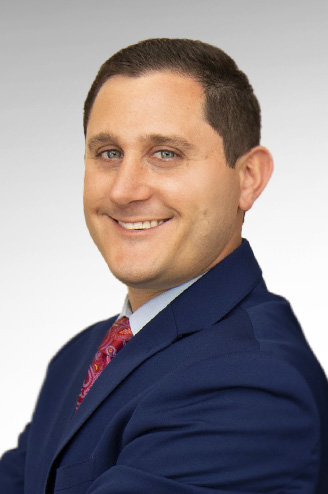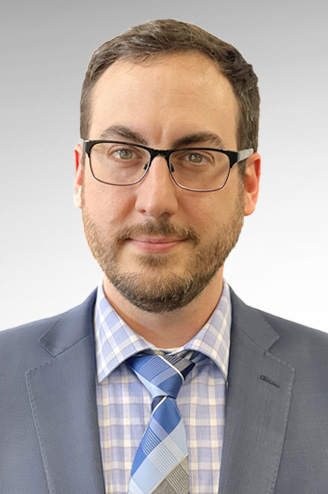New Jersey Motorcycle Accident Lawyers
Motorcycle accidents have an astonishing injury or death rate of 80 percent. After an accident, motorcyclists often face severe injuries and massive financial losses from medical expenses and lost wages. If you have been injured by a negligent driver, you may not only need to recover medically, but financially as well, and you need an aggressive legal team on your side to fight for the compensation you deserve.
Our skilled New Jersey Personal Injury lawyers at Ellis Law have more than two decades of experience protecting the rights of motorcycle accident victims. Our goal is to get you back on the road as soon as possible, and we can do that by providing attentive and accessible legal representation that meets your individual needs.
What Should I Do After a Motorcycle Accident?
When you are involved in a motorcycle accident, you must try to collect as much evidence as you can about the crash. This can be difficult if you were riding a motorcycle, but eyewitnesses might be able to help you. If you are involved in a motorcycle accident, you should complete these steps as safely as possible:
- Report the accident, and request emergency medical attention.
- Take pictures of the accident scene, including the damage, injuries, road conditions, signage, and anything else that may have contributed to the accident.
- Check on the other driver if you can do so safely.
- Collect any eyewitness accounts, and ask for their contact information.
- Seek medical attention, even if you belief your injuries are minor.
- Contact a lawyer as soon as possible.
Common Causes of Motorcycle Crashes in New Jersey
Left-Hand Turns:
The single most dangerous situation for motorcyclists occurs when cars make left-hand turns, which account for 42 percent of all motorcycle accidents, according to the National Highway Traffic Safety Administration (NHTSA). The motorcycle’s small size makes it even less visible to a turning vehicle. The driver may not see the motorcyclist next to them or hit one who has turned right when coming from the other direction. Motorcycles that pass cars within the same lane are even more vulnerable.
Speeding:
Half of the accidents involving a single motorcycle are caused by speeding. Motorcycles get up to speed quickly and travel at high speeds. A sudden stop on a motorcycle can eject the rider, cause a collision, or cause the bike to turn over.
Alcohol Use:
Driving while intoxicated slows reaction times, impairs visibility, and impacts the ability to keep the bike stabilized. Also, an intoxicated motorcycle passenger can make arbitrary movements that interfere with the driver or cause the bike to react violently.
Collisions Between Motorcycles and Fixed Objects:
A significant number of motorcyclist fatalities occur from motorcycles colliding with fixed objects, such as debris in the road, guardrails, bridge abutments, construction zone equipment, trees, stopped vehicles and trucks, and even buildings or low-placed signs. Most of these accidents result in the driver being thrown from the bike.
Dangerous Road Conditions:
Crumbling pavement, potholes, debris, and a lack of necessary signals or signs all increase a motorcyclist’s chance of losing control of their vehicle. Slippery conditions caused by rain, snow, sleet, or ice also pose serious risks to motorcycles due to their low level of traction to the road.
Inexperienced Riders:
Inexperienced motorcyclists are often involved in crashes because they do not understand how to remain safe on the road. Passing your riding test qualifies you to ride the bike, but nothing can prepare you for harsh weather conditions, heavy traffic, or a car that does not see you.
Car Doors:
Riders who are slipping through a parking lot or driving through stopped traffic could be struck by a car door at any time. Motorcyclists who try to speed past an accident scene could be struck by a car door when an injured driver tries to check on other people involved in the accident. Motorcyclists are advised to remain safely clear of all vehicles.
Lane Splitting:
Lane splitting could lead to a collision when a driver wants to change lanes, does not see the motorcycle, and sideswipes the bike. New Jersey law does not directly address lane splitting, but drivers could be cited for failing to remain in their lane or reckless driving.
Unsafe Lane Changes:
Weaving in and out of traffic is considered unsafe lane changes, and motorcyclists often have the maneuverability to change lanes several times in just a few seconds. If the motorcyclist cuts off another driver, the results could be catastrophic and cause the driver to be hit if thrown.
What Are Common Motorcycle Accident Injuries?
Motorcycle accidents generally result in severe injuries to the rider and frequently result in fatalities due to lack of protection. The New Jersey Department of Law and Public Safety reports that 82 percent of motorcycle accidents result in a fatality. The NHTSA reports that motorcyclists are 27 times more likely to die in an accident than those in passenger vehicles.
According to statistics, nearly 600 motorcyclists are killed each year in New Jersey due to collisions with other vehicles. Some of the most common motorcycle accident injuries include:
- Amputations
- Broken bones
- Burns
- Concussion
- Crushed limbs
- Facial and jaw injuries
- Internal bleeding
- Neck and spinal cord injuries
- Organ damage
- Paralysis
- Road rash
- Traumatic brain injuries
A motorcyclist’s best defense against injury is to wear protective clothing, including a helmet, which is required by New Jersey law. Sturdy and abrasion-resistant clothing, over-the-ankle boots, gloves, and eye protection should be worn as well.
How Do You Win a Motorcycle Accident Case in New Jersey?
If you are injured in a motorcycle accident, you want an attorney who is experienced in handling motorcycle injury cases. The intricacies involved in motorcycle claims differ from vehicle accident claims, and you need an attorney who understands the dynamics involved in a motorcycle accident in order to advance your claim.
While interest in motorcycle riding has increased in recent years, some bias still exists regarding motorcycle accidents. Insurance companies often consider motorcyclists as negligent, intentionally reckless, or automatically at fault for an accident, which can impact your case. At Ellis Law, our New Jersey motorcycle accident lawyers have extensive experience and know-how these cases can be influenced by bias and negative connotations.
In order to be able to fight for a successful outcome, your attorney must prove liability, causation, and damages you suffered, as follows:
Liability:
The concept of liability is centered on whether the other driver had a duty or responsibility of care toward other motorists, which they do. All motorists have a duty of care and must take responsible actions in order to protect others and prevent accidents. Your attorney will need to prove the other driver was negligent and did not act in a reasonable manner, leading to the accident and your subsequent injuries.
Causation:
Somewhat similar to liability, causation focuses on whether the other driver’s action or inaction caused you harm. This is usually determined by the “but-for” rule, meaning your attorney must show that the accident and your injuries would not have happened “but-for” the other driver’s action or inaction.
Damages:
Damages refers to the injuries and property losses a motorcyclist suffers in an accident caused by another’s negligence, which may include:
- Physical damages, including injuries, surgeries, permanent disabilities, disfigurement, and pain and suffering at the time of the accident, presently and in the future.
- Economic damages, such as past, present, and future medical expenses and lost wages and personal property damage or loss.
- Quality of life losses, such as an inability to participate in self-transportation, household chores, hobbies, exercise or sports, and other activities you can no longer participate in due to your injuries.
- Loss of consortium, which refers to the spouse or domestic partner of an injured motorcyclist’s right to file claim for their financial losses and loss of intimacy.
What Type of Damages Can I Recover from a Motorcycle Accident in New Jersey?
After a motorcycle accident, it is important to know your rights and how you are protected by your insurance company. Understanding your insurance policy is a critical component when obtaining compensation, and our attorneys will review your policy.
You should make sure you are covered for property damage, medical expenses, and carry personal injury coverage. New Jersey requires all drivers carry “no fault” personal injury protection (PIP) coverage, which is typically used first and covers medical expenses and more regardless of who is at-fault for the accident.
However, the “no fault” laws do not extend to motorcycles, so the PIP insurance you carry as part of your auto policy will not cover expenses related to a motorcycle accident, and you may have to initially rely on your health insurance coverage and file a claim against the other driver’s insurance company for the following damages:
- Medical expenses
- Continued medical care
- Disability
- Lost wages
- Lost earning potential
- Property damage or loss
- Pain and suffering
If either insurance company denies you coverage or attempts to minimize your damages, we will file a lawsuit to recover all the expenses the insurance company should pay as well.
Bear in mind that New Jersey is a comparative negligence state, meaning that if you are found to be partially at fault in the accident, your damages will be reduced accordingly. If, for example, you are found to be 20 percent responsible, you would recover 80 percent of the total available damages.
What Injuries are Caused by Motorcycle Accidents?
Motorcycle accidents generally result in severe injuries to the driver and frequently result in fatalities due to the lack of protection and ejection from the motorcycle. The New Jersey Department of Law and Public Safety reports that 82 percent of motorcycle accidents result in fatality. The National Highway Traffic Safety Administration reports that motorcyclists are 27 times more likely to die in an accident than those in passenger vehicles.
Dozens of motorcycle accidents are reported each week in New Jersey, and nearly 600 motorcyclists are killed each year in New Jersey due to collisions with other vehicles. Some of the most common injuries include:
- Amputations
- Broken Bones
- Burns
- Concussion
- Crushed limbs
- Death
- Facial and jaw injuries
- Fractured Bones
- Internal bleeding
- Neck and spinal injuries
- Organ damage
- Paralysis
- Road rash
- Traumatic brain injury
Motorcyclists’ best defense against injury is to wear protective clothing, including a helmet, which are required by New Jersey law. Sturdy and abrasion-resistant clothing, over-the-ankle boots, gloves, and eye protection aid in less severe injuries when an accident occurs.
How Can a New Jersey Motorcycle Accident Lawyer Help Me?
Hiring an attorney to handle your motorcycle accident claim affords you the best opportunity to obtain compensation for your injuries and property loss. If you have suffered serious injuries, they will likely impact your life and require a lengthy recovery time. This makes it difficult to work on your own claim and haggle with insurance companies. Your attorney can fight on your behalf to:
- Investigate the accident scene, collect evidence, and review the police report.
- Enlist experts and accident reconstruction specialists, if necessary.
- Interview witnesses.
- Consult with your medical providers.
- Negotiate with insurance companies.
- Represent you in court if the case goes to trial.
It is best to contact a New Jersey motorcycle accident lawyer as soon as possible. The details will be fresh in your mind, and your attorney will have an easier time gathering evidence. Additionally, the statute of limitations is two years from the date of the accident, and motorcycle accident claims can take a long time to resolve.
New Jersey Accident Lawyers at Ellis Law Help Victims Injured in Motorcycle Accidents
If you or someone you know was injured in a motorcycle accident, the New Jersey car accident lawyers at Ellis Law will hold the negligent driver liable for injuries related to your accident and will assist you in obtaining maximum recovery and/or insurance coverage under the law. Call our office today at 732-308-0200 or contact us online for a free consultation. Centrally located in Freehold, New Jersey, we serve clients throughout East Brunswick, Toms River, Middletown, Jersey City, Neptune, Hudson County, Union County, Essex County, and Ocean County, New Jersey, as well as Brooklyn and New York, New York.






